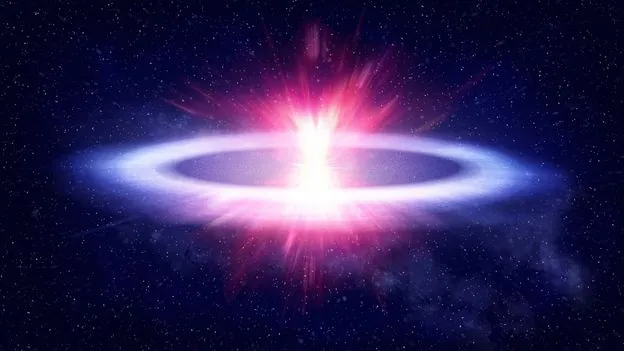
Mysterious Cosmic Explosions: Are They Telling Us About New Black Holes?
2025-05-04
Author: Jia
Astronomers Stumble Upon Unexplained Cosmic Blasts
Astronomers have recently encountered a series of strange and striking explosions in the cosmos, leaving scientists puzzled and eager for answers. The phenomenon began in 2018 with the discovery of a remarkable explosion, known as AT2018cow, located 200 million light-years away in a distant galaxy. This explosion was not merely a supernova; it was significantly brighter and vanished within days, leading to its catchy nickname, "the Cow."
The Rise of LFBots: A New Category of Cosmic Events
Following the Cow, researchers have identified about a dozen similar luminous events called luminous fast blue optical transients (LFBots). These blasts share common traits, appearing brilliantly blue due to their extreme temperatures—around 40,000°C (72,000°F). The intensity and fleeting nature of these explosions have sparked theories about their true origins.
Failed Supernova or Something New?
Initial hypotheses suggested that LFBots might be failed supernovae, where a star attempted to explode but instead collapsed inward, forming a black hole that consumed its remnants. However, a compelling new idea has emerged: these explosions could signal the presence of a previously unknown class of black holes—intermediate mass black holes—devouring stars that venture too close. Recent research indicates that this explanation might hold sway in the scientific community.
The Implications of Discovering Intermediate Mass Black Holes
If proven true, this discovery could bridge a significant gap in our understanding of the universe, linking the smallest and largest black holes and offering crucial insights into dark matter. The phenomenon raises fascinating questions about the universe's structure and the nature of cosmic matter.
The Quest for More Cosmic Insight
Astronomers rely on robotic surveys, like the Asteroid Terrestrial-impact Last Alert System (ATLAS), to monitor the skies for these rare occurrences. The Cow’s extraordinary brightness—up to 100 times that of a typical supernova—captured their attention, prompting studies that discovered even stranger shapes associated with these blasts. Other similar events have since received whimsical animal nicknames, like Koala, Camel, and Tasmanian Devil.
A Recent Discovery: The Wasp Explodes Onto the Scene
In a significant development in 2024, astronomers encountered a new LFBot, designated AT2024wpp, also jokingly referred to as 'the Wasp.' This explosion was notably bright and was detected in its early stages. Initial observations suggest it may not align with the failed supernova theory, raising more questions about the true nature of these cosmic phenomena.
Revisiting AT2018cow: A Star's Gruesome Fate?
Years after the Cow explosion, new X-ray data has revealed intriguing evidence. Scientists found signs of a disk of material around the event, potentially indicating a star being consumed by an intermediate mass black hole, which could range from 100 to 100,000 times our Sun's mass. These findings highlight the dynamic nature of cosmic research and open the door to fresh theories.
The Future of Cosmic Exploration
With expectations running high, upcoming missions like the Ultraviolet Transient Astronomy Satellite (Ultrasat) could dramatically increase the sample size of LFBots we can study, advancing our understanding of these elusive cosmic phenomena. The James Webb Space Telescope (JWST) might also aid in this quest, but securing observation time has proven to be a challenge for astronomers.
Conclusion: The Enigma of LFBots Continues
As researchers delve deeper into the enigma of LFBots, one thing remains clear: the universe is full of surprises. What began as a seemingly simple study has blossomed into a captivating exploration of new cosmic frontiers. With future discoveries on the horizon, who knows what secrets the universe may still reveal?


 Brasil (PT)
Brasil (PT)
 Canada (EN)
Canada (EN)
 Chile (ES)
Chile (ES)
 Česko (CS)
Česko (CS)
 대한민국 (KO)
대한민국 (KO)
 España (ES)
España (ES)
 France (FR)
France (FR)
 Hong Kong (EN)
Hong Kong (EN)
 Italia (IT)
Italia (IT)
 日本 (JA)
日本 (JA)
 Magyarország (HU)
Magyarország (HU)
 Norge (NO)
Norge (NO)
 Polska (PL)
Polska (PL)
 Schweiz (DE)
Schweiz (DE)
 Singapore (EN)
Singapore (EN)
 Sverige (SV)
Sverige (SV)
 Suomi (FI)
Suomi (FI)
 Türkiye (TR)
Türkiye (TR)
 الإمارات العربية المتحدة (AR)
الإمارات العربية المتحدة (AR)